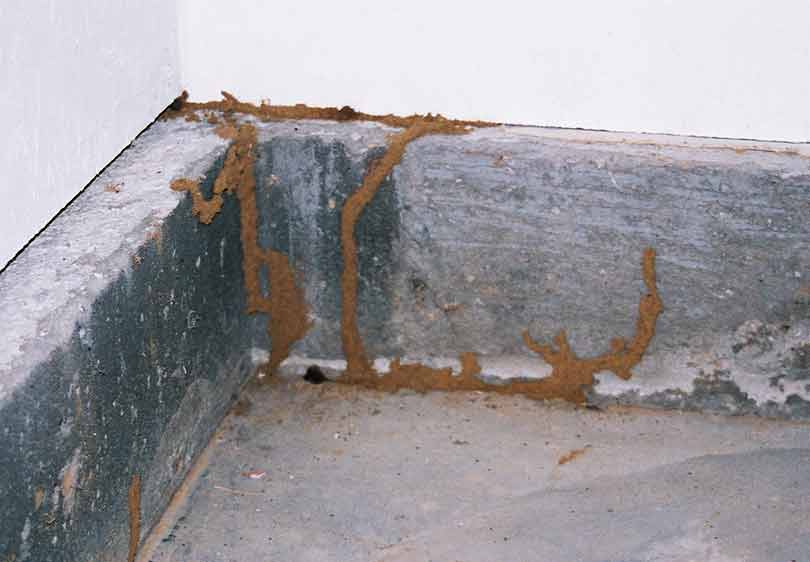Comprehensive Insect Control Provider to Battle Vole Infestations
By employing a combination of identification, exclusion, trapping, and environment alteration techniques, expert parasite control solutions can provide a customized option to fight vole invasions. The key lies in carrying out a well-rounded strategy that not only gets rid of existing voles yet additionally establishes long-lasting control measures to safeguard versus future invasions.
Vole Recognition and Evaluation
Voles, small rodents appearing like computer mice however with much shorter tails, are generally located in lawns and yards, making precise recognition necessary for reliable parasite control measures. These insects can create significant damages to greenery and crops, making timely action important in minimizing possible losses. When evaluating for voles, try to find their particular paths, burrow openings, and gnawed plant origins. best vole pest control. Vole paths are commonly located on the surface of the ground and are produced as they travel back and forth between their burrows and food sources. Burrow openings are small, regarding 1-2 inches in size, and cause below ground tunnels where voles nest and look for sanctuary. Nibbled plant roots are another indicator of vole activity, showing their existence and prospective damage to plant life. By accurately identifying these indicators, parasite control specialists can customize their strategies to successfully handle vole problems and safeguard gardens and backyards from further damage.

Capturing and Elimination Techniques
Efficient insect control methods for taking care of vole invasions often involve using specialized trapping and elimination techniques. Capturing is a widely used technique to record voles and move them away from residential or commercial properties. Live traps, such as box catches or tube catches, are typically utilized as they allow for the risk-free capture of voles without creating harm. These traps are strategically placed in vole paths or near burrow entryways to increase the chances of successful capture.
When establishing traps, it is important to guarantee they are positioned correctly and baited with vole-preferred food sources like peanut butter, seeds, or fruits. Consistently checking the catches is vital to immediately get rid of recorded voles and avoid distress or harm to the pets. As soon as trapped, voles ought to be relocated to appropriate habitats much from human homes to avoid re-infestation.
Furthermore, exclusion strategies, such as installing barriers or secure fencing underground, can assist deter voles from accessing particular areas. Correct disposal of recorded voles and regular monitoring of vole activity are crucial parts of an effective capturing and elimination method in vole invasion administration.
Exemption and Barrier Techniques

To efficiently carry out exemption and barrier approaches, a complete examination of the building is important to determine vole activity and potential entry factors. By dealing with these susceptabilities and applying targeted exclusion and barrier steps, homeowner can significantly minimize the risk of vole problems. Routine upkeep and tracking are vital to make sure that barriers remain effective and intact in deterring voles from accessing vulnerable locations. Eventually, a mix of capturing, elimination, and positive exemption steps can assist effectively take care of vole populations and shield homes from problems.
Environment Adjustment and Prevention
To mitigate vole invasions, environment adjustment and prevention approaches concentrate on changing the setting to discourage vole habitation. One efficient approach is minimizing the schedule of food sources by maintaining yard cut short, getting rid of weeds and debris, and maintaining a tidy lawn. Voles are brought in to locations with thick plants and clutter, so producing open rooms can help prevent them from working out in the area. In addition, decreasing excess wetness by taking care of dripping pipes, ensuring appropriate drainage, and eliminating standing water can make the environment less congenial for voles.
Integrating obstacles like crushed rock boundaries or wire mesh look at here now underground can additionally protect against voles from tunneling into lawns or yards. By applying these environment modifications and prevention measures, residential or commercial property proprietors can proactively lower the risk of vole problems and secure their outdoor spaces from damage.
Monitoring and Follow-Up Strategies

Follow-up methods entail revisiting the dealt with areas to look for any kind of indications of vole activity. Checking stations, traps, and visual assessments are frequently used methods to review the success of the pest control measures. By routinely checking these areas, insect control experts can quickly recognize any kind of rebirth of vole task and take proactive actions to attend to the issue before it intensifies.
In addition, documenting the outcomes of tracking and follow-up activities is important for tracking the progress of vole infestation control with time. These documents assist in recognizing trends, assessing the performance of different control approaches, and making informed decisions for future insect administration techniques. Routine follow-up procedures not only aid in preventing vole re-infestations however likewise add to the general success of parasite control initiatives.
Verdict
Finally, comprehensive parasite control solutions are crucial for efficiently combating vole invasions. By checking and recognizing vole populaces, applying capturing and removal techniques, using exemption and barrier methods, modifying environments, and carrying out tracking and follow-up techniques, homeowner can successfully take care of and stop future invasions. this hyperlink It is critical to address vole problems without delay to prevent damage to property and potential health and wellness threats.
By using a mix of recognition, trapping, exemption, and habitat adjustment techniques, professional pest control solutions can supply a tailored remedy to battle vole problems (vole control utah county). By accurately identifying these indications, pest control specialists can tailor their strategies to successfully take care of vole infestations and shield gardens and yards from more injury
Effective parasite control methods for handling vole problems typically entail using specialized trapping and removal methods.To minimize vole problems, habitat alteration and avoidance techniques concentrate on altering the atmosphere to dissuade vole habitation.Regular surveillance and follow-up procedures are necessary in preserving vole problem control measures and making certain long-lasting success in pest management.